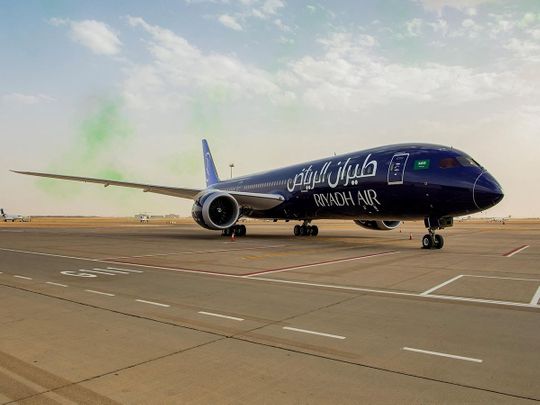Air transport in the GCC is experiencing a significant evolution, surpassing the boom it had in the 1990s and which has propelled the industry on to the global stage like never before.
There exists a range of opinions and assessments regarding the future of air transport in the region and the competition it will set off among Gulf airlines. Drawing from the past and considering the commercial dynamics at play, let’s take a moment to reflect on these.
In 1985, when Emirates was launched in a market that already had Gulf Air, Saudia and Kuwait Airways, concerns came to the fore about potential competition. Similar concerns emerged with the Qatar Airways’ formation in the ‘90s, followed by the advent of Etihad Airways, Air Arabia, and Oman’s entry.
Subsequent developments have defied these worries. The trend, originating in Dubai, effectively transformed the Arabian Gulf into a pivotal hub for passenger and air freight, capitalizing on the region’s strategic location. Today, it is inconceivable to envision air transport in the region without these airlines.
This unprecedented growth resulted in billions of dollars in annual revenue, the creation of tens of thousands of jobs, and a substantial contribution to the GDP of Gulf countries. These achievements in turn stirred discontent among foreign airlines, who were taken aback by the magnitude and speed of the Gulf’s success. They levelled accusations of government subsidies and called for measures to address what they deemed unfair support.
It is worth noting these Gulf carriers operate in accordance with the rigorous accounting standards documented by leading global audit firms.
–
Such support is commonplace
In reality, government support at the beginning of an airline’s journey is commonplace, as many a developed and emerging nation have historically provided – and continue to provide – such support to various sectors of their economies. This includes Germany and numerous European countries, which have supported the development of renewable energy sources, as well as South Korea’s substantial $230 billion in subsidies to foster the growth of the electronic chip industry for strategic and commercial purposes.
With the recent inauguration of the 18th Dubai Airshow, which delivered impressive outcomes, the topic of competition has once again taken center-stage. This gained momentum following announcements about new airlines with substantial capabilities, such as Riyadh Air. The new entrant can be expected to make a significant contribution to air traffic in the region.
In response to these developments, Sheikh Ahmed bin Saeed Al Maktoum, Chairman and Chief Executive of Emirates Airline and Group, offered a thoughtful – and practical – perspective. He said: “The region, much like any other, has the capacity to accommodate numerous major air carriers. This fosters healthy competition and the potential for growth and success.”
He underscored this confidence by highlighting the recent signing of agreements for the acquisition of 108 new aircraft by Emirates and flydubai, amounting to Dh253 billion ($69 billion). The aviation sector plays a substantial role in Dubai’s economy, currently contributing 27 per cent and projected to rise to 45 per cent by 2030.
This underscores the pivotal role this sector can occupy in the economies of the Gulf.
Secured the financial strength
Considering the sector’s vulnerability to unforeseen events like conflicts and epidemics, Gulf companies have successfully established robust financial foundations to be able to better navigate such challenges, as exemplified during the Covid pandemic. Additionally, the government support, which most global airlines have received, can’t be ruled out in such scenarios.
The presence of new airlines will reinforce confidence in Gulf airlines. On one hand, the GCC states have evolved into a global hub for air transport. This transformation will result in a significant surge in the number of passengers travelling between East and West.
–
Meeting the demands of this increased passenger traffic necessitates the presence of airlines capable of accommodating it. The wider Middle East is also experiencing population growth, which will contribute to heightened demand. There is a substantial uptick in air freight, driven by transit traffic and the expected expansion of Gulf economies.
According to IATA, global passenger numbers are projected to reach 4.3 billion this year. In the Middle East, the passenger market is expected to witness growth of about 5 per cent, and totaling around 237 million passengers annually until 2034. Existing and newly established Gulf airlines are poised to capture the lion’s share of this.


